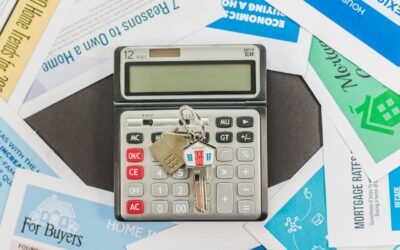Yes, you can use a bridging loan to pay off debt – especially when you need fast access to funds. Here’s how it works, and when it might be the right choice for you.
When debt becomes urgent – like a looming tax bill or the threat of property repossession – it can feel like time is working against you. That’s where a bridging loan can step in. Fast, flexible, and secured against property, bridging finance can give you the breathing space you need to sort things out, without sacrificing assets under pressure.
At Blue Square Capital, we specialise in first charge bridging loans up to 70% loan-to-value (LTV) – helping homeowners, landlords, and investors take control of time-sensitive situations.
Whether you’re paying off a short-term loan, settling arrears, or covering a tax bill, we’re here to move quickly and support your plan. Get in touch with the team at [email protected] to find out more.
How Do Bridging Loans Work?
A bridging loan is a short-term, secured loan used to “bridge the gap” while you wait for funds to come through. This might be from a sale, refinancing or restructuring.
Unlike traditional loans, bridging finance is all about speed – with most loans arranged within days.
The key thing to know about bridging loans is that they are secured against a property. This means that if you can’t repay the loan, the lender has the right to repossess it to recoup the funds. This setup allows lenders to offer more competitive rates and higher loan values as their investment is protected by an asset.
Bridging loans are usually organised within a few days and repaid within 12-18 months. This makes them a great option for short-term debts – especially when time is of the essence.
Need quick access to funds? Contact Blue Square Capital today at [email protected] and speak to one of our bridging specialists.
What Debts Can I Use a Bridging Loan For?
Bridging loans are incredibly flexible and can be used to clear a wide range of short-term debts, including:
- Tax bills (personal or business)
- Mortgage arrears
- Credit card debt or personal loans
- Business cash flow issues
- Securing a property under pressure (e.g. auction finance)
- Preventing repossession
Let’s say you’re facing a big HMRC bill, but are in the process of selling an investment property – a bridging loan can give you the cash to settle the debt before penalties or legal action kick in, with the loan repaid once the property sale completes.
For this reason, they can be helpful tools for paying off debts – especially if you have a solid plan for paying it back.

When Does Using a Bridging Loan Make Sense?
Using a bridging loan to pay off debt can be a smart move – if the timing, purpose, and repayment plan all line up. Here are the most common scenarios where it makes sense:
Time-critical debt:
You’ve got a deadline approaching fast (e.g. a tax demand or pending court action) and can’t wait for traditional financing to come through.
Asset-rich, cash-poor:
You own property or investments, but your cash is tied up. A bridging loan lets you unlock that equity temporarily.
Sale or refinancing in progress:
You’re selling a property, refinancing, or expecting an inheritance or large payment – but it’s not quite ready yet.
Avoiding repossession:
You’re at risk of losing a property due to arrears or a default. Bridging finance can stop the clock while you get back on track.
In all cases, having a clear “exit plan” (how you’ll repay the loan) is incredibly important.
How Much Can I Borrow With A Bridging Loan?
At Blue Square Capital, we offer first charge bridging loans up to 70% of your property’s value (LTV).
Your actual loan amount depends on:
- The value of the property you’re securing the loan against
- Any existing finance or mortgages on that property
- Your repayment strategy
Here’s an example:
If your property is worth £500,000 and you have no mortgage on it, you could borrow up to £350,000 with Blue Square Capital (70% LTV), depending on the exact circumstances.
Loan terms usually range from a few weeks up to 18 months, with interest paid monthly or rolled up to the end of the term.
Use our quick loan calculator or speak to our team to find out how much you could borrow today.
Bridging Loan Calculator
*Based on an interest rate of 0.95% per month.
How Do I Get Out Of A Bridging Loan?
Your exit strategy is key – it’s how you plan to repay the loan. Lenders will want to see a solid, realistic plan before approving your application.
Common exit routes include:
- Selling the property (e.g. once the market improves or legal issues are cleared)
- Refinancing with a traditional mortgage
- Receiving funds from another asset or investment
- Inheritance or business income
It’s important to plan your exit before you apply, not after. And remember: bridging loans are not long-term solutions – they are designed to be used and repaid quickly.
At Blue Square Capital, we work closely with borrowers and brokers to make sure the exit plan is sound – and help you avoid paying more than you need to.
Need help structuring your exit plan? Our experts are happy to walk you through it – no pressure, no obligation.
Using Bridging Loans To Pay Off Debt
Using a bridging loan to pay off debt can be a powerful way to take control of urgent financial situations – especially when you’re asset-rich but need cash fast.
When used correctly, bridging loans offer speed, flexibility, and breathing space, allowing you to clear high-pressure debt without making hasty financial decisions.
At Blue Square Capital, we specialise in first charge bridging loans up to 70% LTV, giving borrowers the confidence to move fast and solve short-term challenges with a clear plan.
Thinking about using a bridging loan to pay off debt? Get in touch with Blue Square Capital for a personalised quote and expert advice.


